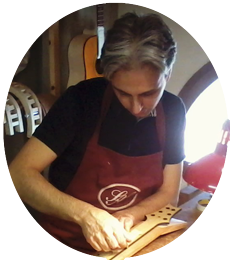
Visit the new website: www.buildyourownguitaronline.com
HOME > Neck through vs bolt on
NECK THROUGH VS BOLT ON
Among the first manufacturers to adopt the "neck through" construction, replacing the "bolt on", were Alembic and later Ken Smith and Tobias. This solution immediately found fertile ground among bassists who, unlike guitarists, are proner to accept new solutions and sounds.
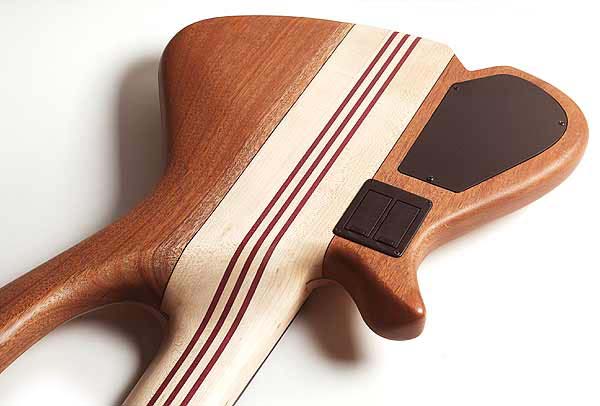
It must be made clear, however, that the timbral innovation of these basses lies not only in the way the neck and body are constructed, but also in other factors such as:
the choice of a larger type of hardware,
of the pickups (mainly humbuckers and not single coil),
of reinforcements inside the neck,
of volutes under the headstock and of massive neck/body joints),
these are all factors that contribute to render the string vibration more even.
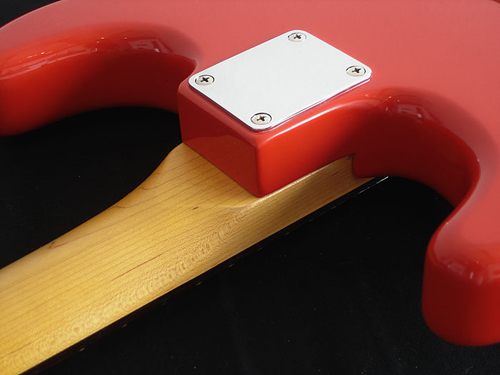
In a "neck through" instrument, the neck of the instrument extends even as far as to form the central part of the body. Two "wings" are then glued to the side of the neck to obtain the body.
Both the neck and the "wings" that make up the body, are made of sandwiches of different woods, mainly exotic woods or figured.
The neck of a "bolt on" instrument is instead separated from the body to which it is fixed with 4 or more screws, which can be screwed directly into the wood or to fillets embedded in the neck.
The neck of a "bolt on" instrument is usually made of a single maple blank that also includes the fretboard. The fretboard can also be made of a different wood, usually rosewood, and then glued to the maple. Even the body is usually built in one piece or more pieces glued together of the same type of wood, among the most common there are ash, alder or mahogany.
The fact that the neck and body in a "bolt on" instrument are made of a single type of wood makes the choice of wood to use, and its seasoning and quality crucial for the sound of the instrument.
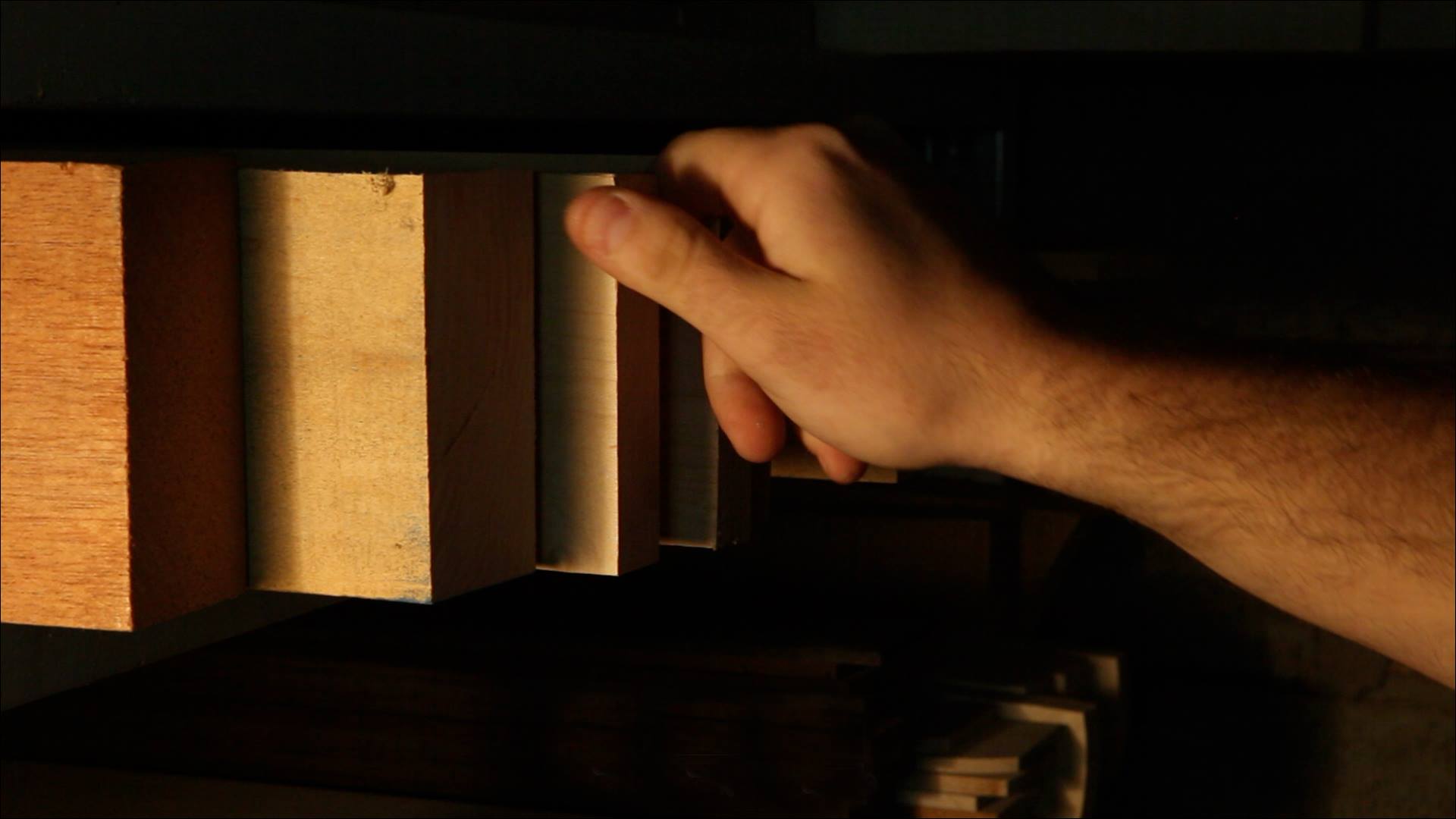
PROS AND CONS
Both “neck through” and “bolt on” methods offer advantages and disadvantages.
One of the advantages of the "bolt on" method is that the neck can be easily replaced if it breaks or gets damaged, and that it is easier to handle during the repair process.
In terms of sound, compared to other solutions, the "bolt on" neck allows you to build the body and especially the neck in one piece and this can help to get a full and full-bodied sound.
If the two parts (body and neck) are made of seasoned and selected woods and are carefully matched/tuned together, we will obtain from the "bolt on" system an extraordinary instrument endowed with a volume higher than that of a "neck through". However, this happens rarely and often at random.
In fact, where the neck and body are randomly matched and selected, and the neck-body joint is not perfect, the "neck through" will give superior timbre results.
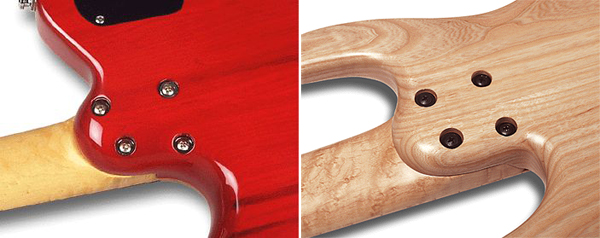
An undeniable advantage of the "neck through" method is the possibility of smoothing the neck-body joint so as to ensure better access to the last frets. Removing too much wood at this point can however lead to neck deformation at the end of the fretboard and a reduction in sustain due to the lower stiffness of the neck joint.

TO SUMMARISE
“Neck through" instruments will tend to sound averagely good and averagely similar to each other as their sound is the result of the resonance peaks of the various wood mixes used.
Among "bolt on" instruments we will find more disparities in terms of quality, with mediocre instruments and peaks of extraordinary instruments, in which the combination of woods, desired or random, has generated an exceptional sound.
The "neck through" method will generally be characterized by greater sustain, greater clarity, compression and general definition of the note and a more defined attack; in essence, a more hi-fi sound.
The "bolt on" method will generate a more "vintage" sound characterized by a greater volume and more punch; ultimately a stronger personality.
Let's remember, however, that "bolt on" and "neck through" are two families of instruments that differ not only in the construction of the neck but also in other important construction details that, added together, strongly influence the overall sound of the instrument and have an effect on the sound far greater than that of the construction type.
For example: the pickups and their configuration, with a preponderance of single coils in the "bolt on" and of "humbuckers" in the "neck through", the type of bridge, almost always more massive in the "neck through", the presence of volutes under the headstock and heavier woods in the "neck through", are all factors that have a strong impact on the timbre of the two types of instrument, whether we are talking about guitars or basses.

